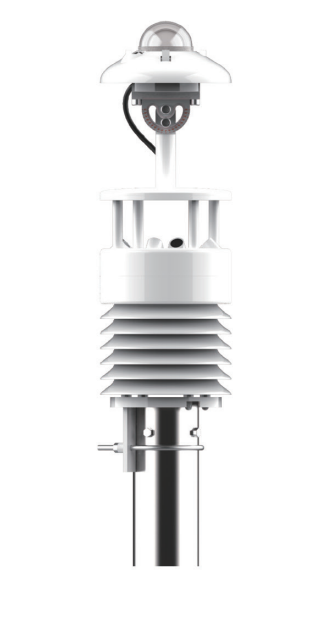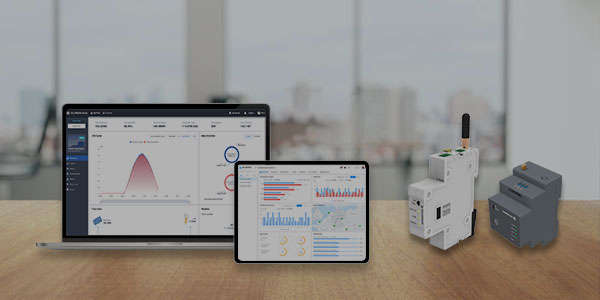When integrating solar energy systems, whether residential rooftops, commercial installations, or utility-scale PV farms, having precise weather data becomes indispensable. SOLARMAN weather station delivers robust environmental monitoring explicitly tailored for PV plants, enabling users to understand how ambient conditions impact yield, detect performance issues early, and improve overall efficiency.
Why Weather Data Matters for Solar Energy?
Solar energy does not perform in isolation. Its output depends heavily on meteorological variables, irradiance, ambient temperature and humidity, wind direction and speed, module temperature, and more. By continuously measuring these factors, a weather station provides the context essential for interpreting solar system behavior.
For example, solar panels may produce less power not because of device failure, but because cloud cover reduced irradiance or higher ambient temperatures lowered panel efficiency. A weather station helps distinguish such environmental causes from mechanical or electrical faults. SOLARMAN emphasizes this by offering accurate real-time and historical data, enabling a comprehensive evaluation of system performance.
What is a PV Weather Station?
A PV weather station is more than a standard meteorological station, specifically designed to support solar photovoltaics. SOLARMAN’s weather station series includes sensors for irradiance, ambient temperature and humidity, module surface temperature, and wind direction and speed. These weather monitoring devices are built to integrate with SOLARMAN data loggers and with the SOLARMAN online platform to deliver visualized meteorological data, alerts, and historical trending, all tailored for solar plant operators.
Key features of weather monitoring station for solar plant include:
- Supporting various remote communication interfaces for reliable data transmission, such as 4G, WiFi, etc.
- Local (RS485/RS422/RS232) communication options for on-site integration.
- Memory capacity to store historical data locally (e.g. Flash memory options).

Key Parameters Monitored of Weather Stations in Solar PV Plants
A well-specified PV weather station measures several critical parameters that directly affect solar performance:
- Irradiance: Solar resource input measured on the plane of the PV modules; key to determining how much sunlight is available for conversion.
- Ambient temperature and humidity: These affect panel efficiency (panels tend to perform less efficiently when hot) and also influence system cooling and component degradation.
- Module temperature: Surface temperature of the solar modules themselves; often hotter than ambient temperature and directly relevant to real-world energy conversion efficiency.
- Wind speed and direction: Wind helps with cooling; its direction and speed can influence localized environmental stressors or shading.
SOLARMAN’s weather station supports these full suite of sensors, enabling system owners to monitor both environmental conditions and PV module behavior.
The Role of SOLARMAN Weather Station in PV Performance
With accurate, frequent weather data, SOLARMAN’s smart weather monitoring system enables better decision-making around performance optimization. Some of the concrete ways it adds value:
- Performance evaluation: By comparing real‐time irradiance and module temperature with output, one can calculate performance ratio (PR) more precisely. This helps detect underperforming strings or modules.
- Yield forecasting and planning: Historical data trends allow more reliable projections for yield, which is essential for financing, grid integration, and system design.
- O&M efficiency: Real-time alerts help operators respond quickly to missing or unusual environmental inputs, sensor or module damage, dirt, shading, etc., reducing energy loss.
- Strategic use of resources: For battery or backup systems, knowing the timing of peak irradiance and temperature trends helps optimize when to store or dispatch energy.
SOLARMAN’s weather station is built to tie into its platform with visualized meteorological data and real-time alerts to support these outcomes.
Solar-Powered and Off-Grid Considerations
Many solar PV plants are sited in remote or off-grid locations. For these, power stability and reliability of data transmission become particularly important. SOLARMAN’s designs include durable sensor housings, protective covers, and communication options that work under varying network conditions. These design decisions ensure all-weather monitoring and support for harsh conditions.
Weather Monitoring for Residential Solar Systems
Even homeowners with small or mid-sized solar installations can benefit greatly from integrating a weather station into their setup. Localized meteorological data provides valuable insights into how site-specific conditions such as roof orientation, shading from nearby trees or buildings, and variations in ambient temperature influence energy production. By monitoring real-time irradiance and module surface temperature, homeowners can better understand fluctuations in system performance and adjust their energy use accordingly, for instance, by timing energy-intensive activities like EV charging or appliance use when conditions are most favorable.
At the same time, a weather station helps detect potential issues early, such as reduced output caused by panel soiling or abnormal heating that could indicate wiring or equipment faults. SOLARMAN’s weather stations are designed with simplified communication options like Wi-Fi and 4G, making them well suited for residential environments. This combination of accessibility, reliability, and actionable data transforms weather monitoring from a professional tool into a practical resource that empowers households to maximize their solar investment.
Weather stations are the environmental eyes and ears of any solar PV system. Without them, you’re flying blind, unaware whether your system’s output is limited by panel inefficiencies, environmental stressors, or misconfiguration. With proper weather monitoring in place, every operator, from homeowner to utility scale, can measure more accurately, respond faster, and optimize yield more intelligently.
The SOLARMAN weather station is designed to deliver on all these fronts: precise sensor arrays, flexible communication, easy integration, and a platform designed for action. If maximizing solar performance is one of your goals, investing in good weather monitoring is one of the smartest first steps.
FAQs of Weather Station
1. Why are weather stations important for solar PV plants?
Solar output is directly affected by irradiance, temperature, and other environmental factors. A weather station allows operators to distinguish between performance losses caused by external conditions and those caused by equipment faults, enabling more accurate performance evaluation and system optimization.
2. What parameters does a weather station typically measure?
Most stations include sensors for solar irradiance, ambient temperature, module temperature, wind speed, wind direction, and humidity. Some advanced stations may also include barometric pressure, rainfall, or particulate sensors.
3. How does a weather station transmit data?
Data is usually transmitted via local connections (RS485, RS422, RS232) or remotely through Wi-Fi, Ethernet, 4G, or LoRaWAN. Many modern weather stations also include local memory or data loggers to ensure information is not lost during network interruptions.
4. What is the difference between a meteorological weather station and a PV weather station?
Meteorological stations are designed for general climate monitoring, while PV weather stations are tailored to solar energy systems. They include specialized sensors such as plane-of-array irradiance and module temperature, which are essential for assessing solar efficiency.
5. What is a weather station data logger?
A data logger is a device that stores weather data locally before transmitting it to the monitoring platform. It ensures continuous records even during connectivity disruptions and allows historical performance analysis.
6. Can weather station data be integrated with monitoring platforms?
Yes. Professional solutions like SOLARMAN weather station are designed to integrate seamlessly with PV monitoring platforms, offering real-time visualization, historical data trends, and alert functions for proactive energy management.










